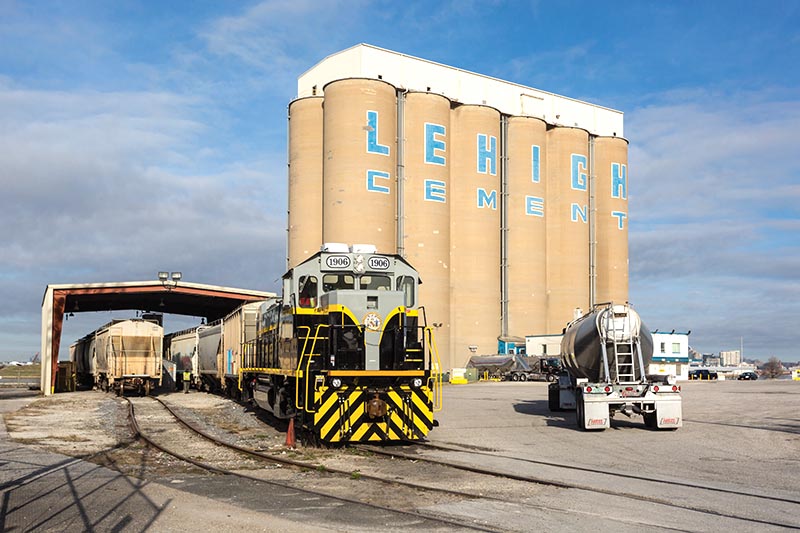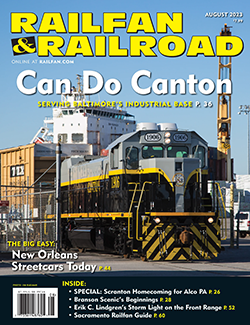 by Bob Kaplan and Jim Kleeman/photos as noted
by Bob Kaplan and Jim Kleeman/photos as noted
As gentrification spread through southeast Baltimore over the last two decades, factories and warehouses were turned into condos, restaurants, coffee shops, and craft breweries. The old industrial waterfront along Boston Street is now home to yachts instead of cargo ships. But as you turn south onto Clinton Street, industry has not relinquished its grip on the north shore of the Patapsco River. The Canton Industrial Area is home to numerous warehouses, docks, silos, transload facilities, and a web of tracks that connect them. Integral to this network is Canton Railroad. Interchanging with both Norfolk Southern and CSX, it serves the various industries here and in the Colgate neighborhood to the northeast.
Rails for the Harbor
As with many railroads, Canton was founded as a result of the desire to develop land. Canton Company was founded in 1829 and became a major factor in the development of Baltimore’s harbor and industry. Through the late 1800s and early 1900s, the company became a marine terminal operator and acquired property along Baltimore Harbor, but railroad access was needed as well.
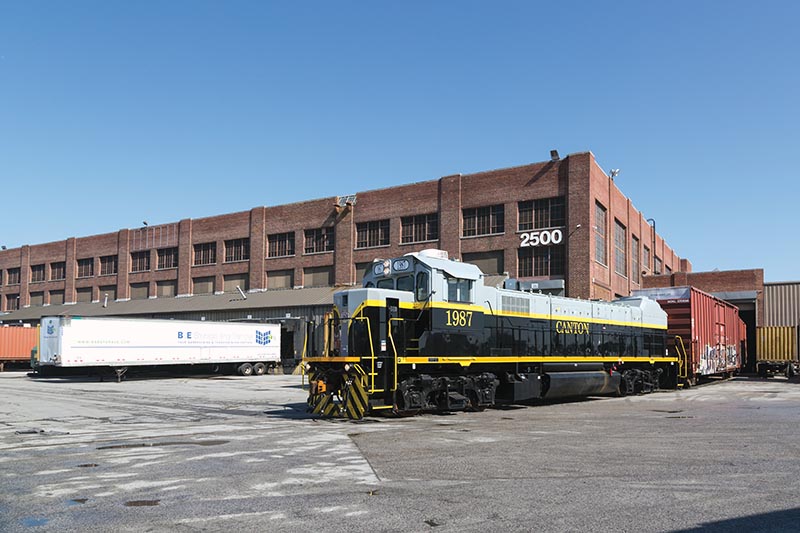
ABOVE: Crew Two with 1987, Canton’s second KLW SE15B, is working the B&E Warehouse in the Point Breeze Industrial Park on March 18, 2022. —Jim Kleeman photo
In 1850, Canton Company reached an agreement with Buffalo & Susquehanna Railroad to provide service to Canton properties along the north shore of the western part of Baltimore Harbor. Unfortunately, even though grading for the project had already begun, opposition to the project — which Baltimore & Ohio was thought to be behind — prevented it from going forward. Northern Central attempted to build into the Canton area in 1858, but it too was thwarted.
Finally in 1866, Canton Company decided to move ahead on its own and received a charter from the Maryland legislature to build its own line to be called Union Railroad. Although there were numerous financial difficulties encountered during construction, the railroad opened for business on July 24, 1873. During the remainder of the 19th century, new piers along the harbor waterfront and new industries were established, all served by Union Railroad. In 1881, Canton sold its interest in Union Railroad to Northern Central Railroad, a Pennsylvania Railroad affiliate.
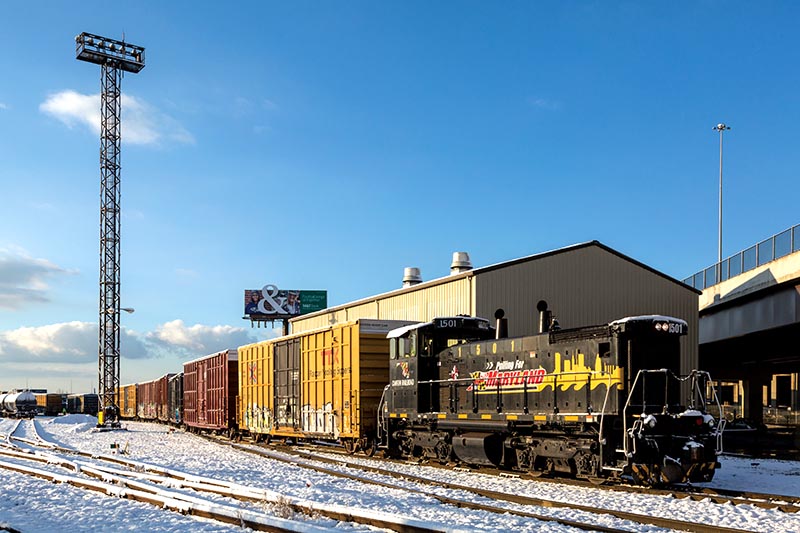
ABOVE: Crew Two will be using SW1500 1501 to work the east end of the railroad on January 7, 2022. It is putting its train together in Penn Mary Yard at the Holabird Avenue grade crossing. —Jim Kleeman photo
In 1905, the U.S. Congress approved deepening of the Baltimore Harbor and its approaches to 35 feet. As a result, Canton Company saw an opportunity to develop property it owned in southeastern Baltimore (both waterfront and inland). However, the company recognized the need for rail access to realize its plans. Approaches to Baltimore & Ohio and Pennsylvania railroads showed these two had no interest in building a branch to service Canton Company’s properties. As a result, Canton Railroad was chartered on May 11, 1906. Construction began from a connection with PRR in 1906, and the new railroad established a connection with B&O in 1910 just east of the current Penn Mary Yard.
Limited operations began in 1907 with a new car float and some of the waterfront property receiving service. The initial phase of railroad construction was completed in 1914. In 1913, flat switching agreements were concluded with PRR, B&O, and Western Maryland wherein each carrier would pay Canton Railroad a flat fee for each of its cars delivered to or picked up from a Canton customer at no additional charge to the shipper.
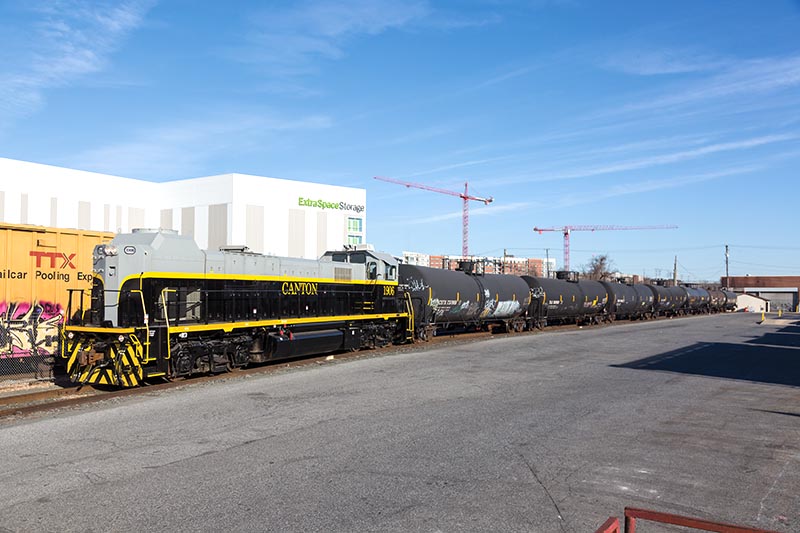
ABOVE: Crew One switches a cut of tank cars at the Boston Street Terminal on March 15, 2021. BST is owned by Canton Railroad and its five spurs handle a variety of commodities. —Jim Kleeman photo
In June 1929, Penn Road Corporation (a PRR subsidiary) gained control of Canton Company and thus Canton Railroad. Canton Company was sold to International Mining Company in 1960. Traffic peaked in 1943 with 148,109 cars being handled. The golden years for the company began in 1947. An ore pier was in operation with imported iron ore being unloaded for shipment to U.S. Steel Fairless Works, near Philadelphia, and to other inland steel mills. However, in the late 1950s and early 1960s iron ore traffic began to decline. Even though the railroad showed a profit in 1964, 1965, and 1966, the trend was downhill.
After struggling from the late 1960s through the middle 1980s, Canton Railroad was purchased by the state of Maryland in 1987 for $875,000, and operation was assigned to the Maryland Transportation Authority (MTA). The MTA takes a hands-off approach with the railroad, which is operated like a private company. Profits are reinvested in the railroad…


